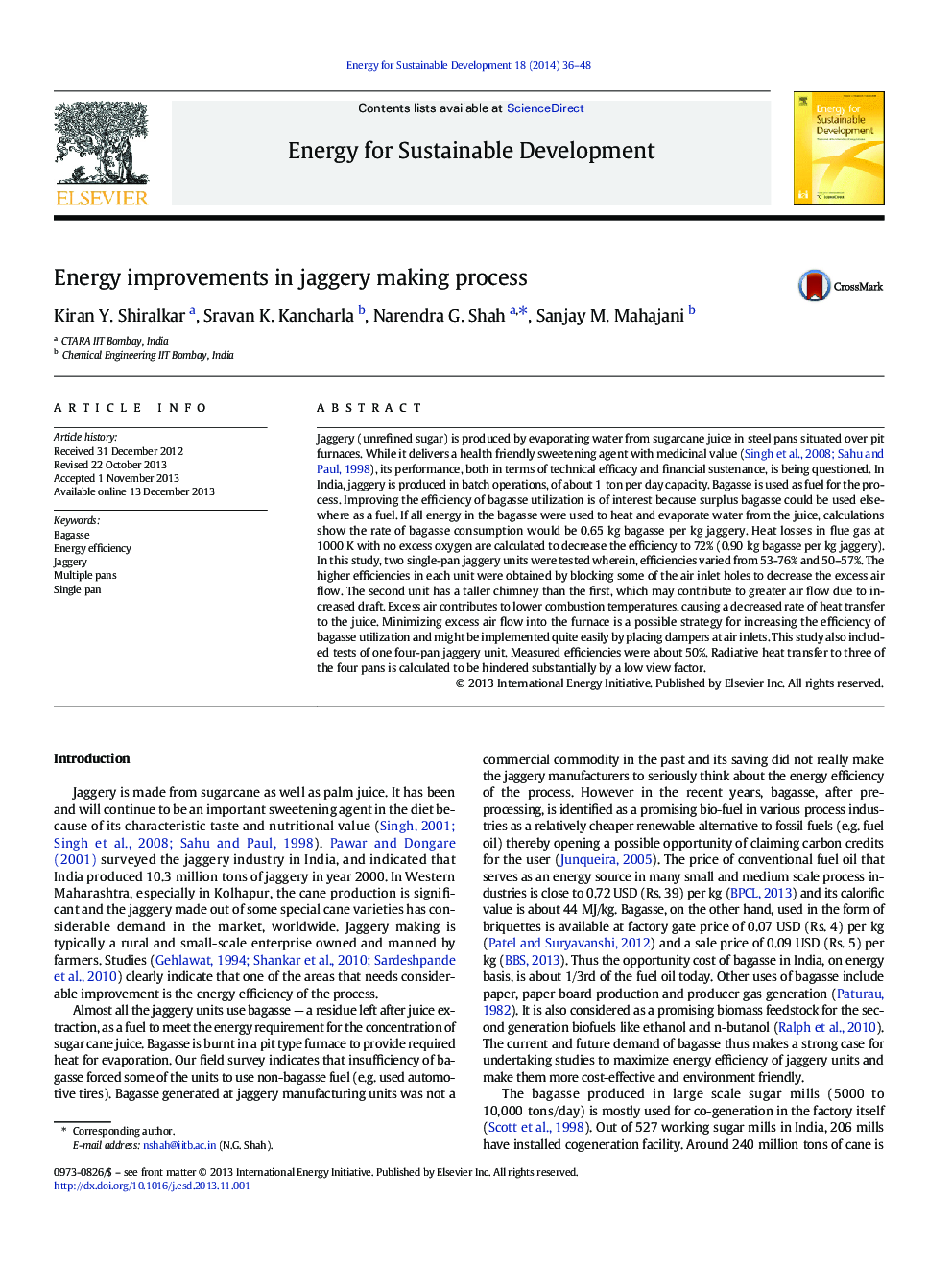| کد مقاله | کد نشریه | سال انتشار | مقاله انگلیسی | نسخه تمام متن |
|---|---|---|---|---|
| 7454048 | 1484412 | 2014 | 13 صفحه PDF | دانلود رایگان |
عنوان انگلیسی مقاله ISI
Energy improvements in jaggery making process
دانلود مقاله + سفارش ترجمه
دانلود مقاله ISI انگلیسی
رایگان برای ایرانیان
موضوعات مرتبط
مهندسی و علوم پایه
مهندسی انرژی
انرژی (عمومی)
پیش نمایش صفحه اول مقاله

چکیده انگلیسی
Jaggery (unrefined sugar) is produced by evaporating water from sugarcane juice in steel pans situated over pit furnaces. While it delivers a health friendly sweetening agent with medicinal value (Singh et al., 2008, Sahu and Paul, 1998), its performance, both in terms of technical efficacy and financial sustenance, is being questioned. In India, jaggery is produced in batch operations, of about 1Â ton per day capacity. Bagasse is used as fuel for the process. Improving the efficiency of bagasse utilization is of interest because surplus bagasse could be used elsewhere as a fuel. If all energy in the bagasse were used to heat and evaporate water from the juice, calculations show the rate of bagasse consumption would be 0.65Â kg bagasse per kg jaggery. Heat losses in flue gas at 1000Â K with no excess oxygen are calculated to decrease the efficiency to 72% (0.90Â kg bagasse per kg jaggery). In this study, two single-pan jaggery units were tested wherein, efficiencies varied from 53-76% and 50-57%. The higher efficiencies in each unit were obtained by blocking some of the air inlet holes to decrease the excess air flow. The second unit has a taller chimney than the first, which may contribute to greater air flow due to increased draft. Excess air contributes to lower combustion temperatures, causing a decreased rate of heat transfer to the juice. Minimizing excess air flow into the furnace is a possible strategy for increasing the efficiency of bagasse utilization and might be implemented quite easily by placing dampers at air inlets. This study also included tests of one four-pan jaggery unit. Measured efficiencies were about 50%. Radiative heat transfer to three of the four pans is calculated to be hindered substantially by a low view factor.
ناشر
Database: Elsevier - ScienceDirect (ساینس دایرکت)
Journal: Energy for Sustainable Development - Volume 18, February 2014, Pages 36-48
Journal: Energy for Sustainable Development - Volume 18, February 2014, Pages 36-48
نویسندگان
Kiran Y. Shiralkar, Sravan K. Kancharla, Narendra G. Shah, Sanjay M. Mahajani,